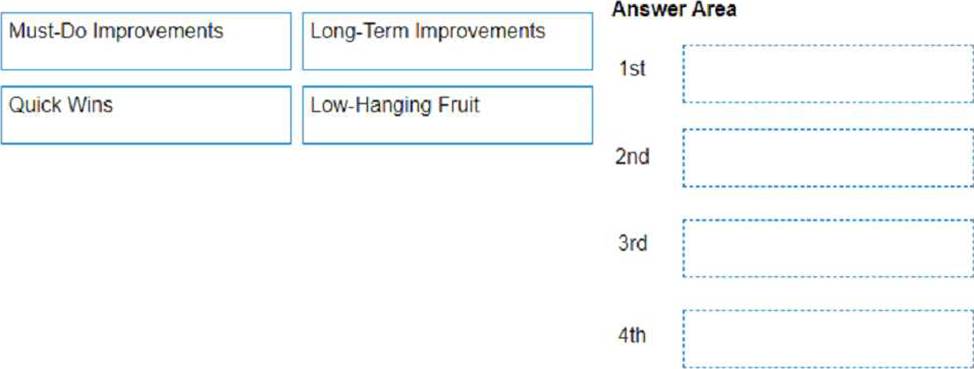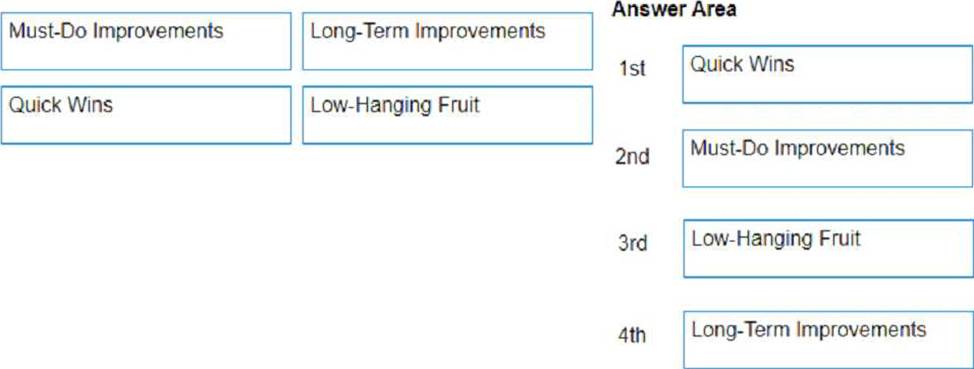Practice Free UiPath-ABAv1 Exam Online Questions
What tool is recommended to track the testing effort?
- A . UiPath Test Manager
- B . UiPath Test Service
- C . Excel
- D . UiPath Data Service
What are the main stages of an Assisted Task Mining project?
- A . Collect data, analyze with AI, visualize results, export results
- B . Extract permissions, analyze with AI, manage projects, export machine model
- C . Record all applications, analyze with AI, identify processes, export processes with ROI
- D . Collect data, analyze permissions, export actions, generate dashboard
A
Explanation:
Understanding Assisted Task Mining (ATM):
Assisted Task Mining empowers the Business Analyst to collaborate with Subject Matter Experts (SMEs) and capture known tasks for automation. This involves collecting data from real-time actions, analyzing it with AI, visualizing the results, and exporting insights for process optimization.
Why Option A is Correct:
Collect Data: This involves capturing real-time actions such as clicks, keystrokes, and screens during task execution.
Analyze with AI: The collected data is processed using AI to identify patterns and variations within the task.
Visualize Results: Results are presented as task maps or workflows to understand processes holistically.
Export Results: The insights can be exported to create a Process Definition Document (PDD) or automation skeleton in UiPath Studio.
Why Other Options Are Incorrect:
Option B: Extracting permissions and managing projects are not core stages in ATM.
Option C: Recording all applications and ROI focus are more aligned with Unassisted Task Mining.
Option D: Exporting actions and generating dashboards are not typical ATM stages.
DRAG DROP
When deciding the priority of processes from a pipeline, what is the order in which the development should be done’?
Instructions: Drag and Drop the items on the left to the boxes on the right in a correct order


Explanation:
The correct order for prioritizing processes from a pipeline for development is:
Quick Wins
Must-Do Improvements
Low-Hanging Fruit
Long-Term Improvements
This prioritization strategy is designed to balance immediate impact with strategic development. Quick Wins are prioritized first because they typically require minimal effort and provide immediate benefits. Must-Do Improvements follow, as these are necessary changes that may require more effort but are essential for the process Low-Hanging Fruit are tasks that are relatively easy to implement and provide value, while Long-Term Improvements are placed last as they often involve significant changes that yield benefits over a longer period123.
Reference: The prioritization logic is based on common project management practices and is supported by discussions in the UiPath Community Forum, where similar strategies are recommended for process development and automation123.
Based on the image, when should you choose the Build Trace option?

- A . You want to automatically record the task with the recording client.
- B . The task environment can be set up for task completion and recording.
- C . You know the high-level process overview and you want to create the trace graph first and then fill it in with the captured actions.
- D . To capture the actions of the task as you perform it and let Assisted Task Mining create the trace diagram automatically.
Which of the following statements would define the UAT planning phase in RPA?
- A . It is a phase during which a plan is developed for user acceptance testing of UiPath robots
- B . It is a phase during which UiPath software is tested for performance and reliability
- C . It is a phase during which UiPath software is installed and configured
- D . It is a phase during which employees are trained on how to use UiPath software
A
Explanation:
The UAT (User Acceptance Testing) planning phase in RPA defines a crucial stage where a plan is developed for testing UiPath robots by end-users to ensure they meet the business requirements and perform as expected. This phase is essential for validating the functionality and reliability of the automation before it goes live.
Reference: UiPath training materials from the UiPath Academy.
